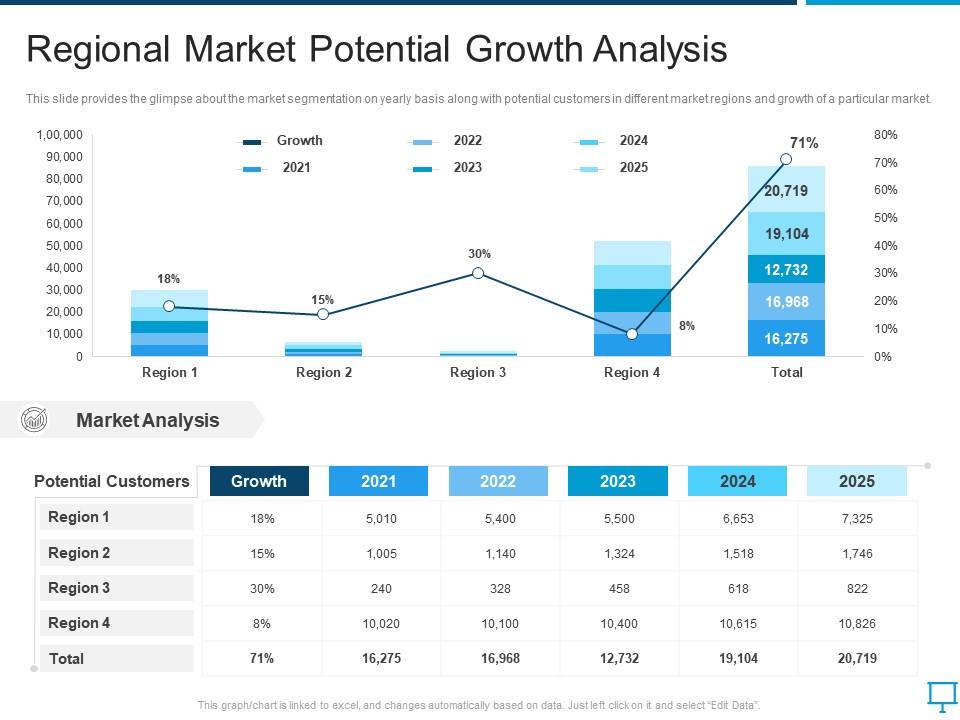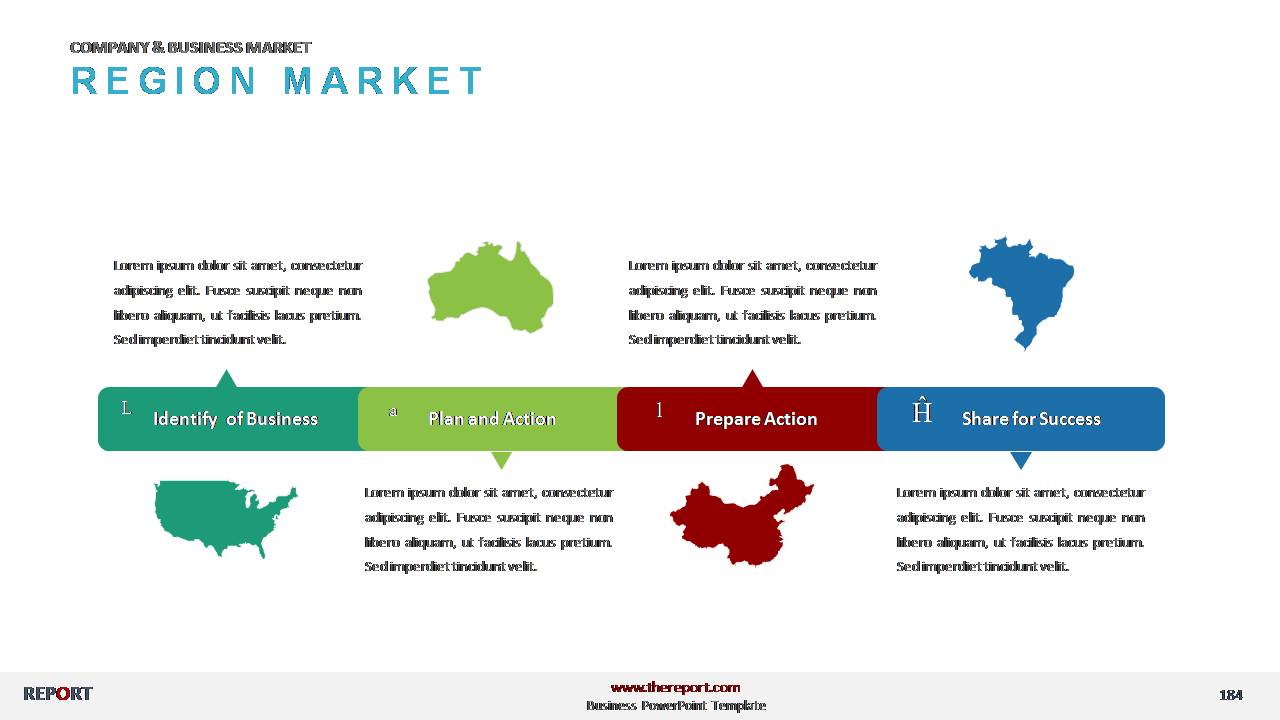Regional Market Analysis: A Comprehensive Guide to Unlocking Business Potential
In today’s global economy, businesses looking to expand or optimize their operations must understand the importance of regional market analysis. Identifying the right regions for investment, product launch, or service expansion can make the difference between success and failure. A thorough regional market analysis not only helps companies understand local consumer behavior but also identifies potential opportunities and challenges within specific areas.
This article will explore the significance of regional market analysis, how to conduct it effectively, and how businesses can use this analysis to drive informed decision-making. We’ll dive deep into the process, tools, and strategies that will help businesses leverage this powerful tool for growth and sustainability.

What is Regional Market Analysis?
Regional market analysis refers to the process of evaluating and understanding the dynamics of a specific market within a particular geographic area. This analysis helps businesses assess the region’s economic conditions, consumer preferences, competitors, and market trends. It provides insights into the potential risks and rewards of entering or expanding in a specific region.
By focusing on regional analysis, businesses can tailor their strategies to meet local demands, capitalize on growth opportunities, and minimize potential risks. Whether you are looking to expand into a new territory, launch a product, or understand consumer behavior, regional market analysis is the cornerstone of informed decision-making.
Why is Regional Market Analysis Important?
Conducting a regional market analysis offers several benefits, including:
1. Understanding Local Consumer Behavior
Each region has its own unique consumer preferences, habits, and needs. Regional market analysis helps businesses understand these local behaviors, allowing them to design products, services, and marketing strategies that resonate with the target audience.
2. Identifying Growth Opportunities
Regional analysis helps uncover emerging markets, untapped opportunities, and areas where demand for certain products or services is increasing. Understanding these trends can lead to higher market share and increased profitability.
3. Minimizing Risks
Expanding into a new region or launching a new product without understanding the local market can lead to costly mistakes. Regional market analysis helps businesses identify potential risks and challenges, such as competition, regulatory issues, and economic conditions.
4. Competitive Advantage
By conducting a thorough regional market analysis, businesses gain valuable insights into their competitors’ strategies, strengths, and weaknesses. This knowledge allows them to develop more effective strategies to stay ahead of the competition.
How to Conduct a Regional Market Analysis
Conducting a regional market analysis requires a strategic approach, utilizing both qualitative and quantitative methods to gather relevant data. Below are the key steps involved in performing a successful regional market analysis:
Step 1: Define Your Objectives
Before starting your analysis, it’s essential to define the specific goals you want to achieve. Are you looking to identify new market opportunities, evaluate competitors, or understand local consumer behavior? Having clear objectives will help you focus your research and ensure you gather the right data.
Step 2: Gather Market Data
Market data is crucial for understanding the economic and demographic conditions of a region. Collect information on the following:
- Population size and demographics: Understanding the age, income levels, education, and lifestyle of the population in the region is critical for identifying target customers.
- Economic indicators: GDP, unemployment rates, inflation, and other economic factors can help you assess the economic health of the region.
- Consumer preferences: Identify what products or services are in high demand and what trends are emerging.
- Local regulations: Understand any legal or regulatory requirements that may impact your business operations in the region.
Step 3: Analyze the Competitive Landscape
Next, you need to assess the competition in the region. Identify key competitors, both direct and indirect, and evaluate their strengths, weaknesses, and market share. This analysis will help you understand how you can differentiate your business and gain a competitive edge.
Step 4: Evaluate Market Trends
Understanding market trends is essential for identifying opportunities and threats. Look at current trends within the region and predict future trends that could impact your business. For instance:
- Technological advancements: How is technology affecting the market?
- Cultural shifts: Are consumer preferences changing due to cultural or societal factors?
- Economic shifts: How are local economic conditions influencing market demand?
Step 5: Use SWOT Analysis
A SWOT analysis (Strengths, Weaknesses, Opportunities, and Threats) can be an effective tool for evaluating your business’s position in the region. Use this framework to assess both internal and external factors that could affect your market strategy.
Key Factors to Consider in Regional Market Analysis
When performing a regional market analysis, there are several key factors to consider:
1. Geography and Infrastructure
The physical characteristics of a region play a significant role in determining how easily you can conduct business there. Consider the following:
- Transportation: Access to roads, ports, and airports can affect distribution and logistics.
- Infrastructure: The availability of electricity, internet connectivity, and other utilities is crucial for businesses that require consistent infrastructure.
2. Socio-Economic Factors
The social and economic conditions of a region directly impact consumer spending patterns and demand for goods and services. Some important socio-economic factors include:
- Income distribution: Regions with higher disposable incomes may offer more opportunities for luxury goods, while areas with lower income levels may have greater demand for affordable products.
- Cultural preferences: Cultural differences can influence purchasing decisions, and understanding local customs and traditions is vital for product positioning.
3. Political and Legal Factors
Political stability, government policies, and regulatory frameworks in the region can either facilitate or hinder your business activities. Make sure to research:
- Local regulations: Business licensing, labor laws, and tax policies.
- Trade agreements: Regional trade policies, tariffs, and export restrictions.
- Political environment: The region’s political stability and any risk of political unrest or changes in leadership.
4. Technological Infrastructure
Access to modern technology can drastically impact business operations. A region with a strong technological infrastructure will make it easier to integrate e-commerce, digital marketing, and automation tools into your strategy.
Utilizing Regional Market Analysis for Business Expansion
Now that you understand how to conduct a regional market analysis, let’s explore how businesses can leverage these insights to expand and grow in new regions.
Tailor Your Marketing Strategy
Regional market analysis provides invaluable data on local consumer preferences. This allows you to tailor your marketing campaigns to resonate with local audiences. Customize your messaging, visuals, and promotional offers to match the specific interests and needs of the region.
Adjust Your Product or Service Offering
In some cases, the products or services that work well in one region may not perform as effectively in another. Based on your regional analysis, you may need to adapt your offerings to better align with local tastes, cultural preferences, and purchasing habits.
Identify Distribution Channels
Regional market analysis can also help you identify the best distribution channels for your products. Whether it’s local retailers, online marketplaces, or direct-to-consumer models, understanding the local infrastructure and consumer behavior will help you choose the most effective distribution method.
Build Strong Local Partnerships
Expanding into a new region can be complex. However, by understanding the local market dynamics, you can identify potential partners who can help you navigate the region more effectively. These partnerships could include local distributors, influencers, or even government entities that can offer insights and support.
FAQs on Regional Market Analysis
Q1: How often should I conduct a regional market analysis?
A1: It is recommended to conduct regional market analysis on an annual basis or when significant market changes are expected, such as economic shifts, new competitors entering the market, or regulatory updates.
Q2: What tools can I use to conduct a regional market analysis?
A2: There are several online tools and platforms, such as Google Analytics, Statista, Euromonitor, and local government websites, that provide valuable market insights, reports, and data.
Q3: Can regional market analysis help with international expansion?
A3: Yes, conducting a regional market analysis is essential when expanding internationally. It helps businesses understand the local market conditions, cultural nuances, and economic factors in foreign regions.
Conclusion
Regional market analysis is a critical component of any business’s growth strategy. Whether you are looking to enter a new market, expand your product offerings, or increase your local footprint, this analysis provides the insights needed to make informed, data-driven decisions.
By understanding local consumer behaviors, identifying emerging trends, and assessing competition, businesses can optimize their strategies for success. With the right approach to regional market analysis, you can unlock opportunities for growth, minimize risks, and ultimately achieve superior business results.


